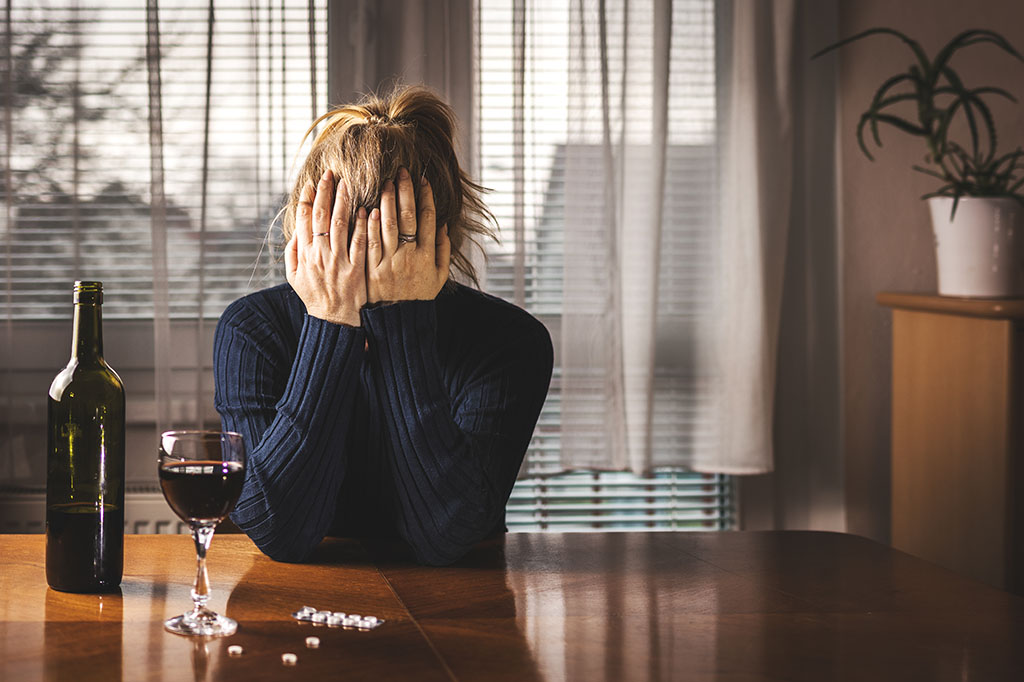People who identify as being part of the lesbian, gay, bisexual, transgender, and queer/questioning (LGBTQ+) community will often face social stigma, discrimination, and other challenges that are unique to this demographic. This is partially due to being misunderstood by those who do not identify as part of this community. The LGBTQ community also faces a greater risk of harassment and violence, which significantly contributes to behavioral health issues like substance abuse. As a facility that offers addiction treatment for members of this community, we wanted to spread awareness of the importance of treatment by sharing more facts and statistics on LGBTQ substance abuse.
Causes of LGBTQ Addiction & Substance Abuse
It’s estimated that between 20% and 30% of gay and transgender people abuse drugs and alcohol, compared to about 9% of the general population.1 As a facility that offers LGBTQ addiction treatment, we understand the many challenges this community faces compared to the general population.
The LGBTQ+ community suffers from higher rates of substance abuse, as a whole, and this is due in part because of societal obstacles that those who do not identify as LGBTQ do not face. Some of these challenges and contributing factors to LGBTQ substance abuse include:
- Discrimination or stigmatization based on sexual orientation
- Emotional abuse
- Hate crimes
- Loss of employment or not receiving promotions due to sexual orientation
- Public humiliation or ridicule
- Rejection or shame from family or friends
- Threat
Oftentimes, LGBTQ individuals will turn to drugs or alcohol to self-medicate their emotional and physical distress. Drugs and alcohol can temporarily numb feelings of depression, anxiety, anger, or fear, but at a hefty cost. While substance abuse may appear to be beneficial at the moment, there are various long-term repercussions that can result.
Those who identify as transgender are particularly vulnerable to drug and alcohol abuse as a form of self-medication for anxiety or loneliness caused by discrimination and negative stigmatization. One study found that transgender students are 2.5 times more likely to use cocaine or meth and twice as likely to abuse prescription drugs like opioids and benzodiazepines.2
Individuals in the LGBTQ community are also more likely to develop mental health disorders, which may further contribute to substance abuse. A major stressor for many LGBTQ+ members is feeling the need to live a closeted life, referring to hiding their sexuality from others to avoid rejection and discrimination.
However, keeping one’s sexual orientation a secret often contributes to a double life, which can take a major psychological toll on the individual. From this, mental illness may develop and make drug and alcohol use more likely to occur as a form of self-medication.
Common psychological issues and mental health disorders in the LGTBQ community include:
- Major depressive disorder (MDD)
- Generalized anxiety disorder (GAD)
- High-stress levels
- Higher rates of suicidal attempts or self-harm
In addition to mental health problems, individuals in the LGBTQ+ community may also experience physical or health issues related to their sexuality, which can increase their likelihood of substance abuse. These issues include:
- Compulsive sexual behavior
- Sex or HIV-related anxiety
- Sexual abuse or assault
- Sexual dysfunction
Many people who identify as LGBTQ have a co-occurring disorder or sexual disorder that either contributes to a drug or alcohol addiction or perpetuates substance abuse. When considering which LGBTQ rehab is best for the individual, there should be a focus on whether mental health treatment and substance-specific treatment are available.
LGBTQ and Addiction: Commonly Abused Substances
While many illicit and prescription substances can contribute to dependence and addiction, the most commonly abused substances in the LGBTQ community include:
- Tobacco: A recent review of the use of tobacco products by LGBTQ individuals shows high rates of smoking and e-cigarette use compared to the general population. In this community, bisexual women report greater rates of trying vaping compared to heterosexual women and greater dual use of tobacco cigarettes and vapes compared to both lesbian and heterosexual women. Additionally, bisexual men were more likely to report past or current e-cigarette use compared to heterosexual men.3,4,5,6
- Alcohol: According to the National Institute on Drug Abuse (NIDA), gay, lesbian, and bisexual adolescents are 90% more likely to use drugs and alcohol than their heterosexual counterparts. The National Survey on Drug Use and Health (NSDUH) also found that lesbian, gay, and bisexual adults are more likely to engage in casual, binge, and heavy alcohol consumption than their heterosexual counterparts. Additionally, approximately 44.6% of LGBTQ individuals between the ages of 18 and 28 reported binge drinking at least once in the past month, and another 10.2% reported past-month heavy alcohol use.1,7
- Marijuana: In 2020, approximately 41.3% of LGBTQ adults 18 and older reported past-year marijuana use compared to 18.7% of the overall adult population. Additionally, bisexual women had the highest odds of marijuana use, according to one study, and lesbian women were six times more likely than heterosexual women to use marijuana. Furthermore, marijuana use among gay men occurred at a rate four times higher than among heterosexual men.9
- Heroin: Approximately 6.7% of LGBTQ adults in 2020 misused opioids (including prescription opioids and heroin use) in the past year compared to 3.6% of the overall adult population.8, 10
LGBTQ Substance Abuse Treatment
One of the reasons that LGBTQ people may be hesitant to get help for addiction or mental illness is the lack of resources available to them. However, there are various LGBTQ rehab programs that focus on the challenges this community faces as well as the lasting effects of substance abuse.
If you or someone you care about is looking for LGBTQ substance abuse treatment, our Clearbrook rehab can help. We offer addiction treatment in Pennsylvania for both LGBTQ and non-LGBTQ members, as well as gender-specific group therapy, to ensure clients are receiving specialized care and support.
For more information about our addiction treatment and detox in PA, call Clearbrook Treatment Centers today at 570-536-9621 or verify your insurance to get started.
Sources:
- SAMHSA – Sexual Orientation and Estimates of Adult Substance Use and Mental Health: Results from the 2015 National Survey on Drug Use and Health
- Wiley Online Library – Substance Use Among Transgender Students in California Public Middle and High Schools†
- NIH – Use of electronic nicotine delivery systems (ENDS) in lesbian, gay, bisexual, transgender and queer persons: Implications for public health nursing
- APA PsycNet – Sexual and gender minority cigarette smoking disparities: An analysis of 2016 Behavioral Risk Factor Surveillance System data.
- NIH – Cigarette smoking, ENDS use and dual use among a national sample of lesbians, gays, and bisexuals
- NIH – Sexual and Gender Minority U.S. Youth Tobacco Use: Population Assessment of Tobacco and Health (PATH) Study Wave 3, 2015-2016
- NIH – Substance Use and SUDs in LGBTQ* Populations
- SAMHSA – 2020 National Survey On Drug Use And Health: Lesbian, Gay, And Bisexual (LGB) Adults
- NIH – Tobacco, Marijuana Use and Sensation-seeking: Comparisons Across Gay, Lesbian, Bisexual and Heterosexual Groups
- SAMHSA – 2020 NSDUH Annual National Report
Related Reading:







